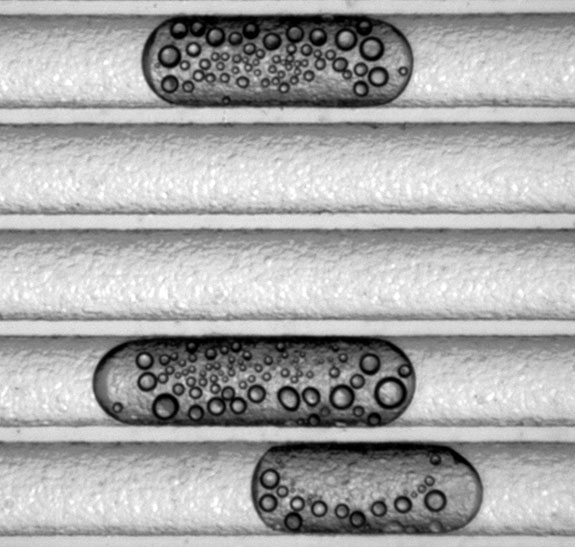Condensation of Droplets Inside Bubbles
Mahshid Mohammadi
Kendra V. Sharp
Oregon State University

Mahshid Mohammadi/Oregon State
Dry bubbles moving in the microchannels may become immobile due to the presence of pinning and capillary forces. Upon stagnation, small droplets begin to condense on the polycarbonate channel walls inside the saturated bubbles. The droplet nucleation points become visible within a few seconds. As the size of the droplets gradually increases they coalesce and become larger. This phenomenon is similar to the condensation of droplets on the inside of a half-full closed bottle of water; however, in that large scale case, it takes much longer for the air to become saturated. The microchannels shown in the images are 250 µm wide and 100 µm deep. The bubbles in the microchannels are so small that the air within saturates very quickly; the bubbles may already be saturated before stagnation. The length of the bubbles increases over time due to the formation and growth of droplets inside them. At higher water flow rates, the pressure of the surrounding water as well as the pressure inside the bubbles is larger. Therefore, there is an increase in the rates of evaporation, condensation, and droplet growth.
Usage Information
These images can be freely reproduced with the accompanying credit: Mahshid Mohammadi/Oregon State.
Contact Information
Kendra V. Sharp
School of Mechanical, Industrial, and Manufacturing Engineering
Oregon State University
Corvallis, OR, USA
Email: Kendra.sharp@oregonstate.edu
